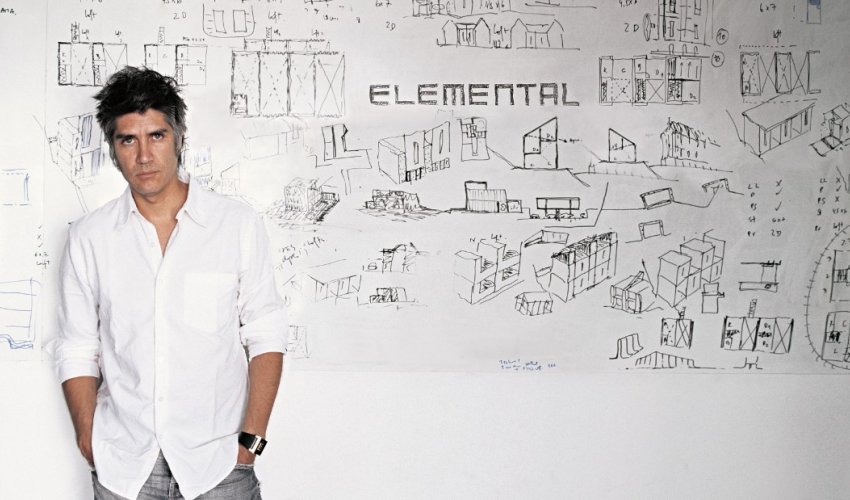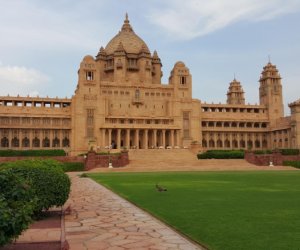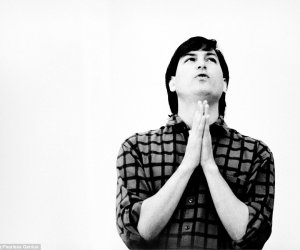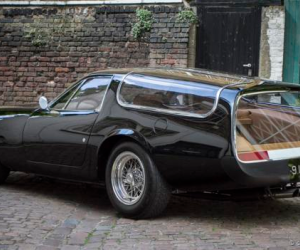Alejandro Aravena owes success to asking 'stupid questions'

Alejandro Aravena, the socially-conscious Chilean architect famed for building "half a good house," is the winner of this year's Pritzker Prize for architecture, the profession's highest honor.
Tom Pritzker, the chairman of the Hyatt Foundation which awards the prize, called Aravena "an architect who deepens our understanding of what is truly great design."
Aravena -- who, at 48 years old, is among the esteemed prize's youngest winners -- is best known for creating inventive, low-cost social housing. His Santiago-based practice ELEMENTAL has built over 2,500 units of housing since 2000, focusing on under-served urban migrants -- including a 2003 project in Iquique, Chile where the firm built housing units which appeared half-built, with the intention that residents extended their living space into the leftover void.
While he has little profile among the public at large in the U.S. or Europe, Aravena is recognised by peers as one of the world's leading architects, and over the past decade has taken prestigious architecture awards including the Marcus Prize and the Erich Schelling Medal. He sat on the jury for the Pritzker prize for six years before this year's win.
In a statement that compounded the prize's focus, in recent years, on design that marries artistry with social impact, Pritzker said: "His built work gives economic opportunity to the less privileged, mitigates the effects of natural disasters, reduces energy consumption, and provides welcoming public space."
For Aravena, speaking over the phone from his practice in Santiago, Chile, the prize is a reward for his practice's five-partner team, for a consistent approach that has married exploring new fields with a refusal to be intimidated by unfamiliar:
"Everything that we've done is an unexplored territory [for us]. Back in 2000, when we started social housing I had no idea what a 'subsidy' was, so in a way we've been very consistent and rigorous in using our own ignorance as a powerful tool."
His practice is known for its participatory design approach, where the architects work with the public and the buildings' end users from the outset: not to "co-design" the building, he says, but to define lines of investigation that free more complex projects from unnecessary complications. He says the approach means asking "stupid questions."
"If you are a rigorous outsider and pay careful attention to the information then eventually you formulate those stupid questions that allow you to move forward."
Built on trust
Even before the Prize's announcement, 2016 was fated as another ground-breaking year for Aravena. He was chosen last July as Director of the 2016 Venice Architecture Biennale -- his first directorial gig -- which will see him focus on "several battles that need to be won" in order to improve the quality of our built environment.
It's typical of Aravena's approach which he says aims to see "classical" architectural artistry complement "socially oriented" or "problem solving architecture," that takes on the environmental, economic, and social issues of its time.
Priztker jurors singled out for praise the UC Innovation Centre Anacleto Angelini, the sixth educational building which Aravena has designed for his alma matter, Universidad Católica de Chile. A statement with the award declared their admiration for the "maturity" of the concrete building, which is nevertheless flooded with light through a central glass atrium. The shell guarantees energy consumption is minimal, and it has earned broad praise for defining an innovative, contemporary appearance in contrast to the glass-sided buildings that are commonplace in modern cities.
But, arguably, he has received greatest recognition internationally after leading ELEMENTAL, the so-called "Do Tank" he founded in 2001 -- an unlikely seeming partnership between his team of architects, a Catholic university, and Chile's largest oil company.
ELEMENTAL has built work in The United States, Mexico, China and Switzerland but retains a close connection to home.
After the 2010 earthquake and tsunami that hit Chile, ELEMENTAL was called to masterplan the reconstruction of the city of Constitución, Chile — a project for which they spearheaded a democratic participatory approach, even while keeping pace with the urgent requirements to rebuild.
Building half a house -- as he did again in Constitución -- was a decision borne out of necessity, working with only $7,000 subsidy per family to cover costs including land and infrastructure.
But it also gave the residents the economic power to decide their own priorities, and those that could afford to extend increased their property value which could be used as collateral for bank loans to restart devastated businesses.
"There are things that they know much better than us, and if somebody knows how to make the most efficient use of scarce resources it's poor families," says Aravena. "They are masters in establishing priorities, and we wanted to take that wisdom into the system"
Aravena explains: The new role of the architect in 2016
Aravena spelled out the global challenge of urbanization for the architect today in a TED talk a year ago, now viewed over a million times. The migration toward cities amounts to the need for a new one million-person city every week, he says -- all for a cost of just $10,000 per family.
I ask if this urgent challenge is what motivates Aravena, and his surprising, optimistic response outlined a novel role for the architect in the years to come:
Alejandro Aravena: "This process of urbanisation -- of people migrating towards cities -- is great news.
"The more people who come to cities the better, in the sense that cities are extremely powerful tools to improve the quality of life of people.
"If you take every single indicator of development -- from child mortality, to access to sanitation, to access to education, to jobs -- it is more efficient to deliver that in the form of a public policy if people are concentrated in a space. Actually, if anything, cities are concentrations of opportunity, not accumulation of houses."
Tom Pritzker, the chairman of the Hyatt Foundation which awards the prize, called Aravena "an architect who deepens our understanding of what is truly great design."
Aravena -- who, at 48 years old, is among the esteemed prize's youngest winners -- is best known for creating inventive, low-cost social housing. His Santiago-based practice ELEMENTAL has built over 2,500 units of housing since 2000, focusing on under-served urban migrants -- including a 2003 project in Iquique, Chile where the firm built housing units which appeared half-built, with the intention that residents extended their living space into the leftover void.
"Half of a good house" financed with public money. The yellow block, filled-in, shows how middle-class standard can be achieved by the residents themselves.
"Half of a good house" financed with public money. The yellow block, filled-in, shows how middle-class standard can be achieved by the residents themselves.
While he has little profile among the public at large in the U.S. or Europe, Aravena is recognised by peers as one of the world's leading architects, and over the past decade has taken prestigious architecture awards including the Marcus Prize and the Erich Schelling Medal. He sat on the jury for the Pritzker prize for six years before this year's win.
In a statement that compounded the prize's focus, in recent years, on design that marries artistry with social impact, Pritzker said: "His built work gives economic opportunity to the less privileged, mitigates the effects of natural disasters, reduces energy consumption, and provides welcoming public space."
For Aravena, speaking over the phone from his practice in Santiago, Chile, the prize is a reward for his practice's five-partner team, for a consistent approach that has married exploring new fields with a refusal to be intimidated by unfamiliar:
"Everything that we've done is an unexplored territory [for us]. Back in 2000, when we started social housing I had no idea what a 'subsidy' was, so in a way we've been very consistent and rigorous in using our own ignorance as a powerful tool."
"Half a good house" in Constitución, Chile. Built after a tsunami flattened the city in 2010
His practice is known for its participatory design approach, where the architects work with the public and the buildings' end users from the outset: not to "co-design" the building, he says, but to define lines of investigation that free more complex projects from unnecessary complications. He says the approach means asking "stupid questions."
"If you are a rigorous outsider and pay careful attention to the information then eventually you formulate those stupid questions that allow you to move forward."
Built on trust
Even before the Prize's announcement, 2016 was fated as another ground-breaking year for Aravena. He was chosen last July as Director of the 2016 Venice Architecture Biennale -- his first directorial gig -- which will see him focus on "several battles that need to be won" in order to improve the quality of our built environment.
It's typical of Aravena's approach which he says aims to see "classical" architectural artistry complement "socially oriented" or "problem solving architecture," that takes on the environmental, economic, and social issues of its time.
But, arguably, he has received greatest recognition internationally after leading ELEMENTAL, the so-called "Do Tank" he founded in 2001 -- an unlikely seeming partnership between his team of architects, a Catholic university, and Chile's largest oil company.
ELEMENTAL has built work in The United States, Mexico, China and Switzerland but retains a close connection to home.
After the 2010 earthquake and tsunami that hit Chile, ELEMENTAL was called to masterplan the reconstruction of the city of Constitución, Chile — a project for which they spearheaded a democratic participatory approach, even while keeping pace with the urgent requirements to rebuild.
Building half a house -- as he did again in Constitución -- was a decision borne out of necessity, working with only $7,000 subsidy per family to cover costs including land and infrastructure.
But it also gave the residents the economic power to decide their own priorities, and those that could afford to extend increased their property value which could be used as collateral for bank loans to restart devastated businesses.
"There are things that they know much better than us, and if somebody knows how to make the most efficient use of scarce resources it's poor families," says Aravena. "They are masters in establishing priorities, and we wanted to take that wisdom into the system"
Aravena spelled out the global challenge of urbanization for the architect today in a TED talk a year ago, now viewed over a million times. The migration toward cities amounts to the need for a new one million-person city every week, he says -- all for a cost of just $10,000 per family.
I ask if this urgent challenge is what motivates Aravena, and his surprising, optimistic response outlined a novel role for the architect in the years to come:
Alejandro Aravena: "This process of urbanisation -- of people migrating towards cities -- is great news.
"The more people who come to cities the better, in the sense that cities are extremely powerful tools to improve the quality of life of people.
"If you take every single indicator of development -- from child mortality, to access to sanitation, to access to education, to jobs -- it is more efficient to deliver that in the form of a public policy if people are concentrated in a space. Actually, if anything, cities are concentrations of opportunity, not accumulation of houses."
"The idea is to channel rather than resisting that capacity of people to provide themselves with the built environment," Says Aravena.
"The problem is that the scale, the speed, and the scarcity of means with which we have to respond to this process of urbanization, has no precedence in human history.
"We need to build a one million person city, per week, with $10,000 per family in order to accommodate this migration towards cities. If we don't solve this equation... it's not that people will stop coming to cities, they will come anyhow, but they will live in awful conditions.
"So in order to be able to respond the such a scale and speed of demand of urban migrants, we won't solve it unless we use people's own capacity to provide themselves with the built environment.
"That's why we think the favelas [cramped urban slums constructed ad-hoc by their residents] are not part of the problem but part of the solution. The scarcest resource in the construction of these new urban environments won't be money, it will be coordination and simplicity.
"So the role of the architect will be creating the right frame[work] so that the forces involved are channeled in the right direction."
(CNN)













www.ann.az
Similar news
Similar news




































 Photo
Photo 



 Video
Video 

